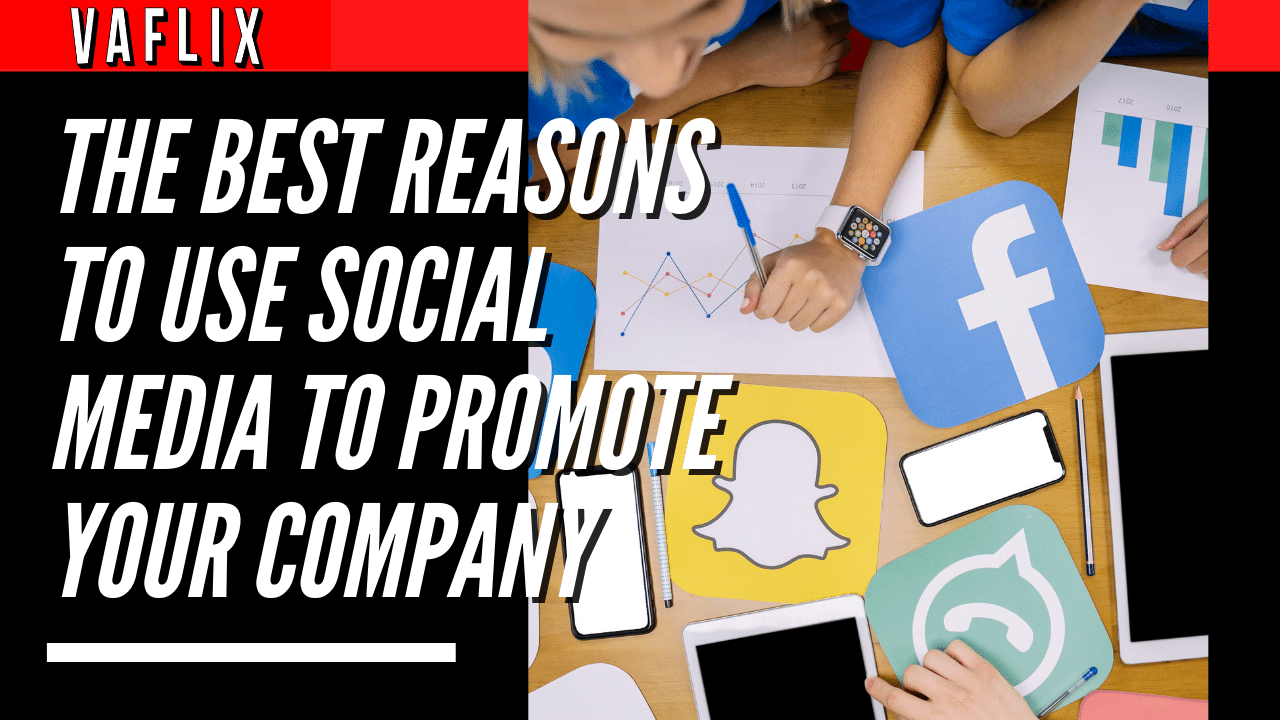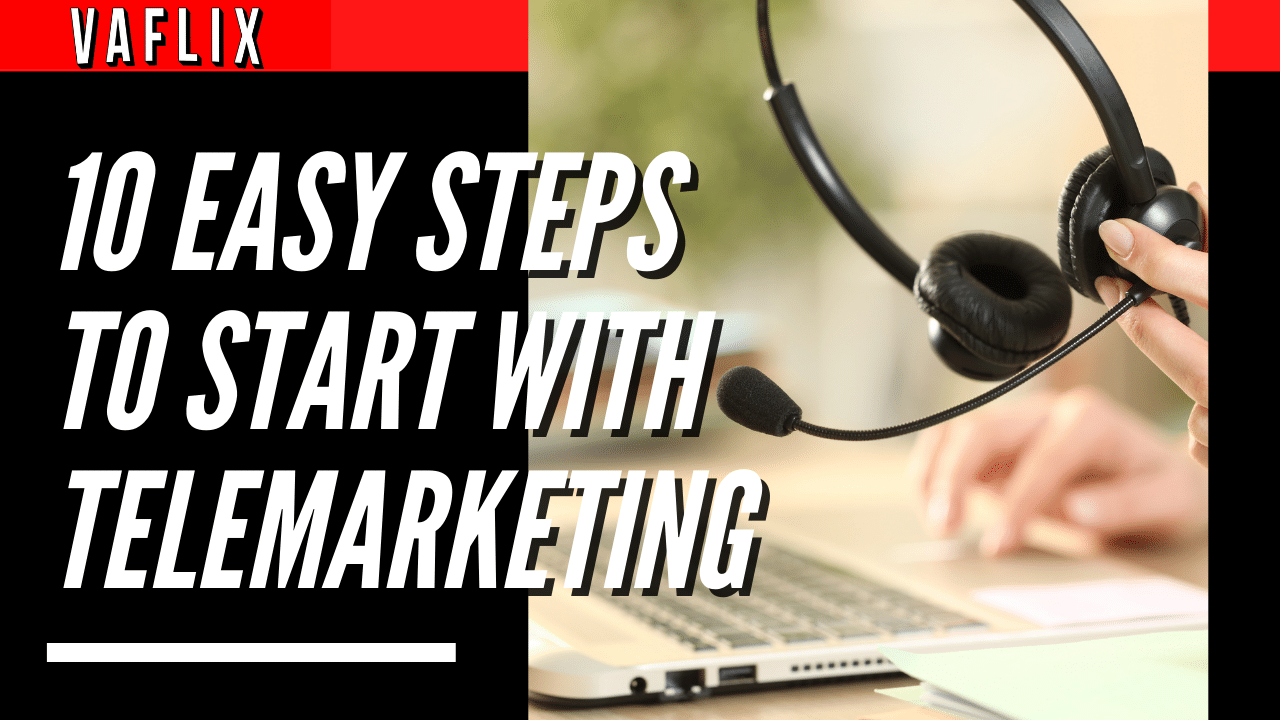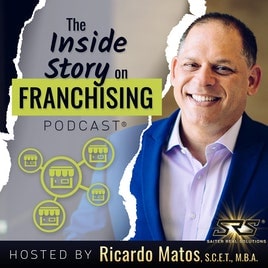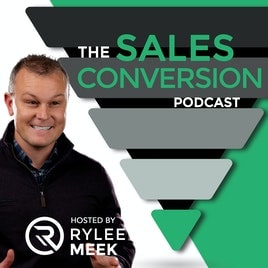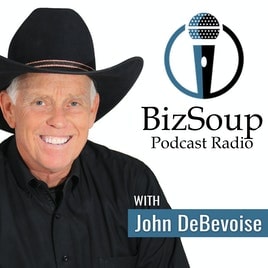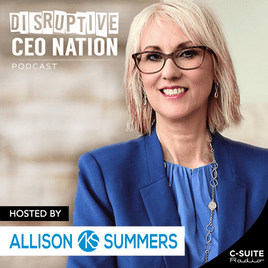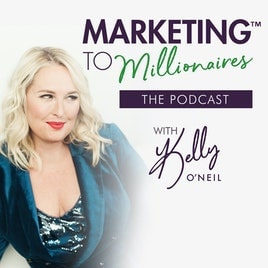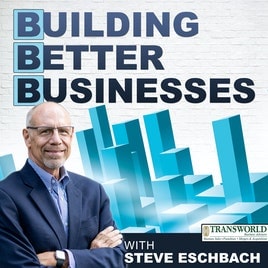Sales for Busy Entrepreneurs: Know the Lingo
Thinking of Hiring a Virtual Assistant?
Recently, we’ve had conversations with a number of owners of small businesses who are very successful at selling their product or service but who have a difficult time finding the right salespeople to hire or determining whether or not their marketing partners are truly knowledgeable in their field. Why is this the case? simply because they lack an understanding of certain fundamental aspects of the sales process itself. It’s possible that you are one of them, but even if you aren’t, we hope that by writing a series of blog entries over the next several months on that awful word, “selling,” we may provide you with some useful insights and tips.
First things first, let’s get a handle on sales leads.
Sales leads
First things first, what exactly are “leads”?
First and foremost, any and all sales processes begin with the generation of sales leads. You won’t go very far if you don’t have any clues to follow. A sales lead may either be a single person, such as a consumer who visits your website, or it may be an organization, which is especially relevant when you are selling business to business. A consumer who visits your website is an example of a specific individual (b2b).
If your sales leads come in the form of companies or other types of organizations, such as a local town council, you should make sure to identify the decision-maker or group of decision makers in that organization because, at the end of the day, they are going to be the ones that will actually decide whether or not the deal is successful.
Leads may range from “cold” all the way up to “hot,” with the “hot” end of the spectrum being the greatest and most valuable leads for you because of how much more probable it is that they will actually be converted from leads into sales. One way to think about it is that the more “hot” a lead is, the closer they are to being ready to make a purchase.
Cold leads
Prospective buyers or clients who have not yet been reached by your business are known as “cold leads.” They have never shown any interest in what you are providing, either because they are not aware that you exist or because, even if they are aware that you exist, they have never been forced to reach out to you. Either way, they have not shown any interest in what you are delivering. Since of this, converting cold leads is clearly rather difficult; yet, you should be careful not to fall into the trap of just depending on warm or hot leads because you WILL ultimately run out of them! For certain industries, particularly those that are based on new or emerging technologies, you might also find that the majority of the leads you have to contact are cold for the simple reason that they haven’t been “educated” about your product or, for that matter, any of the products in your category. your competitors. This is especially likely to be the case if the industry in question is based on new or emerging technologies. Consider, for example, the field of virtual assistants and their services. Guess what the first question that a lot of small business owners ask when you cold call them to tell them about the services that your company, VA FLIX, offers. In the past, we at VA FLIX have cold called a lot of small business owners to tell them about the services that we offer here at VA FLIX.
There are instances when we need to “educate” our leads so that they are fully aware of the services that we are providing. After that, we will be able to discuss the reasons why our company is the most reputable provider of virtual assistant services currently available. As this example demonstrates, there is a little distinction between doing this and following up on cold leads who already have an understanding of your offering. To “educate” your clientele takes a lot of effort, but we’re the first virtual assistant firm in our field to reach out to them, so we have that going for us. Imagine that you are the customer calling us up on the phone. At some point during our chat, you became aware that the service that we are providing genuinely seems like it may be of use to your small company at some point. If you were to contact anybody, would it be VA FLIX or one of our other competitors?
Naturally, making cold calls to potential leads may be extremely nerve-wracking, since the likelihood of being turned down is, rationally speaking, pretty high. More will be spoken about it at a later time.
Warm leads
“Warm leads” are prospective customers or businesses that have already shown an interest in your company in the past. It’s possible that they’ve gone to your website in the past, that they’ve engaged with some of your marketing efforts in some manner, or that they heard about your firm via a friend or colleague. However, when they replied to your company presentation, they weren’t quite ready to purchase right at that time, for whatever reason. This is something that’s worth keeping in mind. This does suggest, though, that they are likely to be interested in your offer at some time in the future, whether it be right now, in a couple of days or months, or whenever it may be most relevant for your market. The most crucial difference between warm and cold leads is that warm leads have already shown that they have a demand for your product or service.
Hot leads
Warm prospects are those individuals or organizations that have a significant level of interest in the product or service that you are providing. They are going to purchase it either at this precise moment or at some time in the not too distant future. These are the leads that you need to locate or have converted from your cold or warm leads in order to go further. According to the AIDA model, which will be discussed in a later section of this blog series, they have the DESIRE to purchase your product; but, you still need to encourage them to take ACTION and actually part with their credit card information. If you engage them in conversation, there is a good chance that they will subscribe, but you shouldn’t assume that all “hot leads” are prepared to purchase your product or service just yet. Some of them will, while others won’t.
Generating and qualifying leads
You could be saying to yourself, “That’s all well and good, but where do I discover these leads in the first place?” and “That’s all well and good,” respectively.
The issue of “generating leads” is one that we will discuss in more depth at a later time; but, for the time being, we only wanted to clarify what we mean by that phrase. By the way, “prospects” are the same thing as “leads,” which means that they are individuals who have the potential to make a purchase from you.
Finding the appropriate individuals to initiate communication with is the first step in the lead generation process. It is possible that they are anything from “cold” to “hot,” but in order to locate them, you must first look in the appropriate places. After you have located them, you will typically either make contact with them immediately (to qualify them) or record their information in a database so that you or another member of the team may call them at a later time. You might generate leads from a directory of some kind, a mailing list that you have paid for, by trawling through the internet looking for people talking about the need they have for your product (this is where social media can be great), or from a list of your own contacts that you’ve generated through networking. The ways to generate leads are virtually endless, but we’ll try to cover most of the important ones in the following section.
When you are working through the process of qualifying leads, you are determining just how interested—or hot or cold—the leads that you have produced really are. In big sales organizations, this is the task that appointment setters and the majority of the people tasked with cold calling are responsible for doing before handing over the leads of higher quality to the sales team. They provide the function of a “filter,” allowing the higher-paid, better-trained, and more convincing members of the sales team to concentrate their efforts on conversing with potential customers who are more likely to make a purchase from them. If your company is on the smaller side, it’s possible that this will also be your responsibility. The process of qualifying leads may be a time-consuming and frustrating one at times. Even though you have all of these names and phone numbers stored in a massive database, it does not necessarily guarantee that all of those people will be interested in purchasing anything from you.
Reaching out to a potential customer and starting a conversation are the only steps required to qualify a lead. During the course of this conversation, you should make an effort to determine the requirements of the potential customer and then determine whether or not you are able to provide them with a remedy. Do not merely call through the list in an attempt to sell your product or service without first carefully considering whether or not the customer really requires your product. Consider the case of an ice cream shop as an illustration. No one who is in charge of an ice cream parlor needs a lawn cutter. Therefore, Therefore, regardless of how hard you try to sell them on the idea, they will not be purchasing one from you. You are free to use whatever amount of persuasion you see fit. They will not purchase your goods if they do not have a need for them, since they will not buy them. ever. If you do sell lawnmowers, you must first determine the requirements of the potential customer whose information you are gathering before making contact with them. If at all possible, you should not have included the ice cream parlor on your list in the first place. Nevertheless, if it was, you ought to have evaluated the requirements of that company as soon as you contacted them and not after giving them a drawn-out sales presentation. You are doing nothing but squandering time (not just your own, but also the time of your prospective customers).
Gatekeepers
A word of caution: qualifying prospects is not quite as simple as it may first seem. Are you curious as to why? Gatekeepers For some reason, it’s usually simple to imagine a “gatekeeper” as a security guard or military protecting a gateway, and well, that’s basically who they are. They prohibit people from entering or exiting certain areas. Someone who acts as a barrier between you and a potential consumer or client and must be overcome before you can even consider having a conversation with them. This person is known as a gatekeeper. They will bring you to a complete halt and will most likely send you running out the door. And don’t even assume for a second that they’ll mention the fact that you called your prospect, because they won’t! These gatekeepers are used to dealing with sales calls, and it is quite unlikely that they would compile a list of their favorite calls and then provide it to your potential customer when they are already so busy. He or she hired the gatekeeper in large part to preserve their important time, which was one of the primary reasons for doing so.
The majority of the time, gatekeepers are secretaries, personal assistants, receptionists, or lower levels of management. For example, a marketing manager is likely to be the one to answer the phone or to be waiting outside the office of a marketing director. Sometimes, particularly in a smaller company, they will simply be workers lower down the food chain. This is especially true in situations where the person in question works. Have you ever attempted to discuss the situation with management after a member of a customer support team has informed you that they would not be able to provide you with a refund? We are aware that this has occurred, and the circumstances are quite identical. The issue of gatekeepers is only going to get more difficult to overcome as the size of the organization you are attempting to contact grows.
Do not lose hope, though, since we will provide you with some pointers on how to sidestep gatekeepers a little bit later on. (Here’s a hint: this is the point in the conversation that you really need to ask yourself, “How can I talk to a possible customer without his gatekeeper interrupting me?”)
USP(s)
This is one that you probably already know, but we felt the need to bring it to your notice regardless since, shockingly, it is often overlooked.
Your USP is your “Unique Selling Proposition.” The Singularity is of utmost importance in this context. If you are phoning potential customers in an effort to make a sale, you need to provide them with as much information as you can about your company and the ways in which it is unique. Why should they buy from you rather than one of your competitors? / Why should they buy from you?
Perhaps you are able to provide in a much shorter amount of time. Perhaps your staff has years of knowledge in the sector. Or perhaps you offer customer service that is unparalleled. Consider the distinctive qualities of your product or service, as well as the advantages that your buyer will get from making a purchase from your organization.
Having a number of unique selling propositions (USPs), or even just one extremely powerful primary USP, which you make sure is at the center of all of your marketing and sales communications, is incredibly important. I am aware that this may seem straightforward. You need to ensure that your prospects will remember your firm for the appropriate reasons, and you also need to persuade them that what you are selling is superior to what the other companies in the market are providing.
Opening and closing.
This is one that you probably already know, but we felt the need to bring it to your notice regardless since, shockingly, it is often overlooked.
Your USP is your “Unique Selling Proposition.” The Singularity is of utmost importance in this context. If you are phoning potential customers in an effort to make a sale, you need to provide them with as much information as you can about your company and the ways in which it is unique. Why should they buy from you rather than one of your competitors? / Why should they buy from you?
Perhaps you are able to provide in a much shorter amount of time. Perhaps your staff has years of knowledge in the sector. Or perhaps you offer customer service that is unparalleled. Consider the distinctive qualities of your product or service, as well as the advantages that your buyer will get from making a purchase from your organization.
Having a number of unique selling propositions (USPs), or even just one extremely powerful primary USP, which you make sure is at the center of all of your marketing and sales communications, is incredibly important. I am aware that this may seem straightforward. You need to ensure that your prospects will remember your firm for the appropriate reasons, and you also need to persuade them that what you are selling is superior to what the other companies in the market are providing.
The sales funnel
It is helpful to have an understanding of the “sales funnel” as well as the “sales pipeline.” You have a large number of unqualified, cold sales leads who have never been exposed to your firm at the very top of the funnel, which is the area of the funnel that is the largest. These are the individuals that are in your sales database but with whom you have not yet made any kind of contact in any form. The goal here is clearly to persuade them to continue through the sales process until they reach the bottom of the funnel, at which point they will have paid for your goods or service, received it, and be able to leave as a satisfied client. They are now free to leave the procedure at this point. Keep these satisfied clients as long as possible, and work to move them through your sales funnel more than once if you have the business savvy to do so. A further discussion on the topic will follow shortly.
Naturally, as the prospect advances farther down the funnel, there is a greater chance that they may lose interest and give up on the process. In point of fact, just around one percent of all of the cold, unqualified sales leads that entered the funnel at the very beginning will end up being turned into genuine, paying clients. Because of this, making sales is a challenging process that is fraught with rejection. As a result, you shouldn’t take it too personally if it’s something that happens to you. Pay attention to the comments and questions that are being raised by prospective buyers, and make an effort to comprehend the factors that are driving them away from your offer. You will not be successful in persuading everyone, but if you are having a hard time getting anybody interested in your product or service, then you need to make some adjustments to either the product or the way you price it.
The sales funnel is a useful tool for illustrating not only the numerous phases of the sales process but also the many areas of negotiation. The probability that a prospect will become a paying client will, rationally speaking, grow the farther they go down the funnel (remember, they are becoming “hotter” as they do so). It is highly helpful to have an understanding of the initial numbers entering your sales funnel as well as the number of customers who exit the funnel at each step. This information may be calculated and evaluated. It’s possible that the buyers are interested in purchasing your goods, but they don’t like the payment choices that you provide. It’s possible that they see your sales personnel as being overly “pushy.” It’s possible that the conversation they had with your delivery team in order to reserve a delivery window caused them to decide against continuing with the procedure. It is essential to have an understanding of whether or not any leakage may be reduced from the funnel, and if so, where and how this can be accomplished!
The AIDA model
The AIDA model, which is an acronym that stands for Attention – Interest – Desire – Action, has a very tight relationship to the idea of the sales funnel. Even though it was developed at the start of the industrial revolution, this concept is still quite applicable in modern times.
Having said that, walking through the model,
Attention
At the beginning of the marketing process, “attention” is the first stage. You must find a way to capture the interest of the people who make up your target market. This might be done via advertising, media stunts, sponsorship of events that your target demographic is likely to attend, or even as simple as picking up the phone and calling them.
Interest
The following step in your sales funnel is called “Interest” (or “Interaction,” as some marketing professionals like to call it). You just called out someone’s name (this is the “attention” part) and that person has just turned around to look at you. How exactly do you plan to prevent them from just giving you a strange look and walking away down the street? Evidently, the length of time that a prospective consumer will pay attention to you depends on the level of interest that they have in the products or services that you provide. Explain to them all of the wonderful advantages that your product provides, as well as the excellent cost-effectiveness of the product that you are selling to them. Now is your opportunity to capture their attention.
Desire
Again, the answer may be found in the letter’s name: “Desire” (or “Dialogue,” as some people choose to call it). After getting someone’s attention, having them turn around, and listening to what you have to say, the next step is to convince them that they desire what it is that you are selling to them in a significant way. You need to persuade them that your product or service will meet their requirements and that your organization is the best option for them to purchase from.
Action
Last but not least, “A” stands for “Action.” If you were successful in persuading your prospect to buy from you, you should have insured that they would now take some kind of action as a result of your sales method. This is the last stage of the sales process. Your customer should make a purchase or sign up for your service in the ideal scenario. However, if this does not occur, you should still make an effort to persuade them to make a request for additional information, inquire about a price quote, or sign up for your newsletter. In short, you should do anything that will increase the likelihood that they will make a purchase from you at some point in the future. Be sure to follow up on these highly qualified leads in a timely manner, giving them enough time to examine your proposal but not enough time to purchase from one of your other clients.
We really hope that you liked reading this article. In the not-too-distant future, there will be further information on sales.



